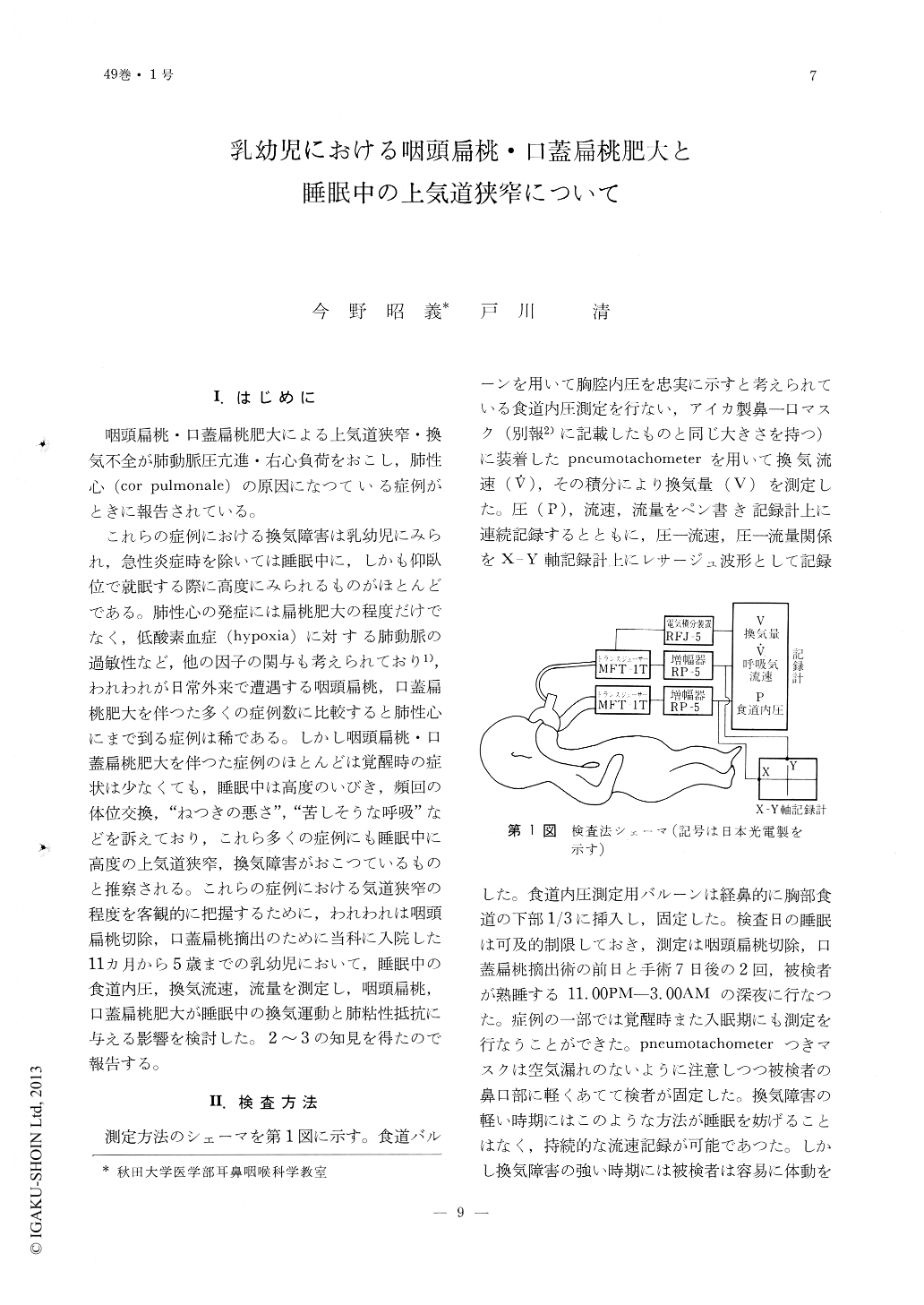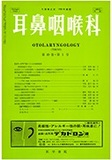Japanese
English
- 有料閲覧
- Abstract 文献概要
- 1ページ目 Look Inside
Ⅰ.はじめに
咽頭扁桃・口蓋扁桃肥大による上気道狭窄・換気不全が肺動脈圧亢進・右心負荷をおこし,肺性心(cor pulmonale)の原因になつている症例がときに報告されている。
これらの症例における換気障害は乳幼児にみられ,急性炎症時を除いては睡眠中に,しかも仰臥位で就眠する際に高度にみられるものがほとんどである。肺性心の発症には扁桃肥大の程度だけでなく,低酸素血症(hypoxia)に対する肺動脈の過敏性など,他の因子の関与も考えられており1),われわれが日常外来で遭遇する咽頭扁桃,口蓋扁桃肥大を伴つた多くの症例数に比較すると肺性心にまで到る症例は稀である。しかし咽頭扁桃・口蓋扁桃肥大を伴つた症例のほとんどは覚醒時の症状は少なくても,睡眠中は高度のいびき,頻回の体位交換,"ねつきの悪さ","苦しそうな呼吸"などを訴えており,これら多くの症例にも睡眠中に高度の上気道狭窄,換気障害がおこつているものと推察される。これらの症例における気道狭窄の程度を客観的に把握するために,われわれは咽頭扁桃切除,口蓋扁桃摘出のために当科に入院した11カ月から5歳までの乳幼児において,睡眠中の食道内圧,換気流速,流量を測定し,咽頭扁桃,口蓋扁桃肥大が睡眠中の換気運動と肺粘性抵抗に与える影響を検討した。2〜3の知見を得たので報告する。
There are many reports describing cor pulmo-nale caused by enlarged tonsils and adenoids. However, compared to large number of patients suffering from marked snoring and obstruction of the upper airway due to hypertrophic tonsils and adenoids, cases are rare that may develop into cor pulmonale.
Experimentally, four infants and young child-ren were observed in order to evaluate the degree of airway obstruction and the effect upon sleep. During sleep total pulmonary resistance and brea-thing patterns were recorded with the measure-ments of intraesophageal pressure, respiratory flow rate and respiratory volume.
Before adenotonsillectomy, a marked increase of total pulmonary resistance was recorded show-ing apparent fluctuation, from time to time, that reached as high as 30-600 cm H2O/1/sec, depending upon the sleeping posture, depth of sleep and the degree of opening of the mouth.
The airway obstruction appeared to be parti-cularly severe among infants with chronic rhino-sinusitis and purulent nasal discharge when they sleep in supine position. The breathing patterns were quite irregular with hypoventilation alternat-ed by hyperventilation. When hypoventilation persisted for some time, the patients showed fre-quent changes in the sleeping posture as if to seek a better airway.
As the airway resistance increases in inverse proportion to the second power of the cross-sec-tional area of the airway, slight further decrease of the airway diameter among these patients through acute inflammatory swelling of the tonsils and adenoids may, further, cause a maked in-crease of airway resistance.
After adenotonsillectomy, the total pulmonary resistance decreased to the point as low as 5-30 cm H2O/1/sec and the breathing pattern became regular with no particular restlessness during sleep.
When nasal obstruction was produced artificial-ly postoperatively by plugging the anterior nasal passage with cotton plagets, elevation of the trans-pulmonary resistance reappeared, but on this occassion, the rise was much milder than before the operation.

Copyright © 1977, Igaku-Shoin Ltd. All rights reserved.


